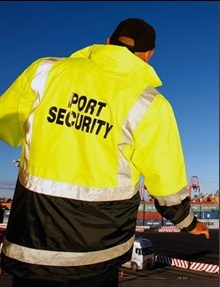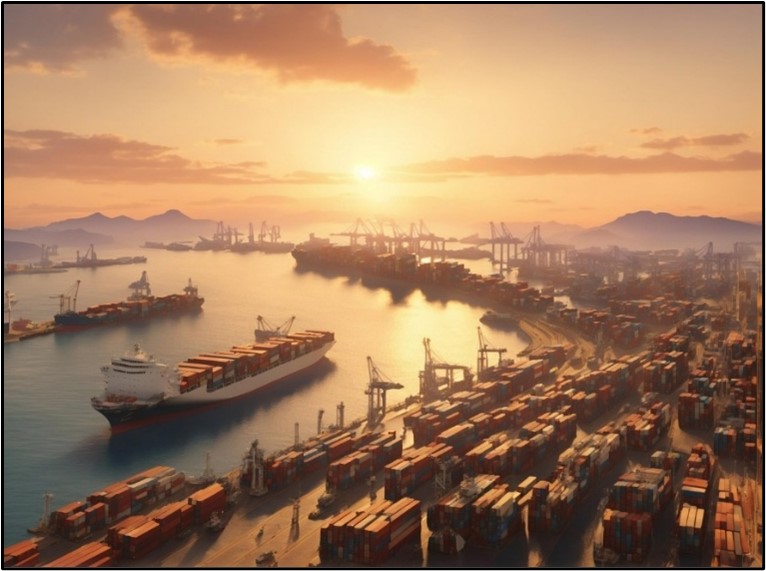Ports are the lifeblood of global trade, facilitating over 80% of international commerce by volume. Yet, their critical role makes them prime targets for security threats, from terrorism to cyberattacks. Enter the International Ship and Port Facility Security (ISPS) Code – a global framework designed to safeguard maritime security and ensure the resilience of port operations. Adopted in 2004 under the Safety of Life at Sea (SOLAS) Convention, the ISPS Code has transformed how ports and ships mitigate risks worldwide.
This blog dives into the ISPS Code, exploring its structure, benefits, challenges, and its pivotal role in sustaining port facility security. Packed with industry data and practical insights, it’s a must-read for professionals seeking to strengthen security and support a safer maritime future.
What is the ISPS Code?
The ISPS Code is an International Maritime Organisation (IMO) initiative born from the need to address vulnerabilities exposed by events like the 9/11 attacks and the 2002 Limburg tanker bombing. Today, it governs security for 174 SOLAS member states and over 10,000 port facilities globally. Its mission? To standardise ship security and port security measures, ensuring a unified approach to threat prevention.
The code operates in two parts:
- Part A: Mandatory rules for security assessments, plans, and officer designations.
- Part B: Voluntary guidelines to support compliance.
By aligning international shipping regulations, the ISPS Code fosters a secure environment for the maritime supply chain, protecting lives, cargo, and infrastructure.
How the ISPS Code Strengthens Port Security:
The ISPS Code is built on a robust framework of requirements that work together to sustain port facility security. Here’s a breakdown of its key components:
Security Roles
- Port Facility Security Officer (PFSO): Oversees port-specific security
measures. - Ship Security Officer (SSO): Manages onboard security protocols.
- Company Security Officer (CSO): Ensures fleet-wide compliance.
Security Plans
- Port Facility Security Plan (PFSP): A tailored blueprint addressing
each port’s unique risks. - Ship Security Plan (SSP): A vessel-specific strategy for threat
response and prevention.
Security Levels
- Level 1: Routine measures for normal operations.
- Level 2: Enhanced protocols for heightened risks.
- Level 3: Maximum safeguards during imminent threats.
Assessments and Reporting
Regular security assessments (PFSAs and SSAs) identify vulnerabilities, while mandatory reporting keeps stakeholders informed.
For example, the Port of Los Angeles conducts annual PFSAs, using drones and AI to assess its 43-mile waterfront, ensuring compliance and resilience.
Benefits of ISPS Code Compliance
Compliance with the ISPS Code delivers tangible advantages for ports and the broader maritime ecosystem:
Reduced Security Incidents
Since its adoption, the ISPS Code has contributed to a 40% drop in piracy attacks between 2010 and 2020. Structured security plans and real-time monitoring have made ports less vulnerable to physical threats.
Operational Efficiency
Secure ports run smoother. The Port of Rotterdam saw a 15% decrease in ship turnaround times after bolstering its ISPS measures with automated gates and biometric checks.
Economic Gains
A World Bank study found that enhanced port security can increase trade volumes by up to 10%. Compliant ports attract more business, lowering insurance costs and boosting investor trust.
Global Collaboration
With 174 nations aligned under the SOLAS convention, the ISPS Code ensures seamless security standards, from Singapore to Southampton.
Challenges to Sustaining Compliance
While transformative, the ISPS Code isn’t without obstacles:
Cost Barriers
Initial compliance costs reached $2 billion globally, with ongoing expenses of $1 billion annually. Smaller ports in developing regions often lack funds for advanced systems or training.
Customisation Complexity
Every port requires a unique PFSP, but resource-limited facilities struggle to adapt the code to local risks, like piracy in the Gulf of Guinea versus smuggling in the Mediterranean.
Workforce Gaps
A 2019 IMO survey found that 30% of PFSOs lack advanced training, risking gaps in execution.
Emerging Threats
Cyberattacks surged in 2020, with 132 ransomware incidents targeting maritime systems. The ISPS Code must evolve to address digital risks alongside physical ones.
Strategies for Success
To overcome these hurdles and sustain port facility security, ports can adopt these best practices:
- Train Continuously: Regular drills and certifications keep security
teams sharp. - Embrace Technology: AI surveillance and cybersecurity tools enhance protection.
- Audit Regularly: Annual third-party reviews ensure compliance stays
on track. - Collaborate Globally: Partnerships with the IMO and INTERPOL
provide critical intelligence.
The Port of Singapore, for instance, uses drone patrols and blockchain tracking, setting a gold standard for modern port security.
Conclusion – A Secure Future for Ports
The ISPS Code is a linchpin of maritime security, empowering ports to protect global trade while navigating a dynamic threat landscape. Though challenges like cost and complexity persist, its benefits – fewer incidents, streamlined operations, and economic growth – make it indispensable. By investing in training, technology, and collaboration, ports can turn compliance into a competitive edge, securing their role as gateways to prosperity.




